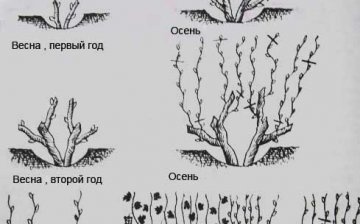Correct pruning of grapes
Caring for grapes involves, first of all, its pruning. Correct pruning of grapes ensures the development of the bush itself, its correct formation, increases its yield and even takes care of sheltering the bush for the winter and facilitating the care of the bush itself. Many gardeners are also confident that cutting the bush speeds up the process of ripening the berries itself.
Correct pruning of grapes involves removing a large part of the annual growth, but if necessary, then older vines. Pruning helps establish a relationship between root development and the aerial growth of the bush.
The main rules for pruning grapes are the absence of pity for regrown shoots, because pruning allows the remaining vines of grapes to fully develop and be filled with juices, receive a sufficient amount of light, nutrients and all the necessary trace elements for full growth. That is why it is important not only to shorten the branches, but to fully prune them, thereby making it possible for other branches to develop, the shoots from which in the future will also lend themselves to pruning.
Pruning of grapes also depends on the type of vine itself. In horticulture, there is a distinction between standard grapes for grapes that are not covered for the winter, and standard pruning for grapes, which requires shelter for the winter.
The rules for the correct pruning of grapes should be taken into account during the annual formation of the bush, because it is important not only to give the shoots the opportunity to fully develop, but also to form fruit links for the development of a strong vine, to correctly place the wounds on the branches.



